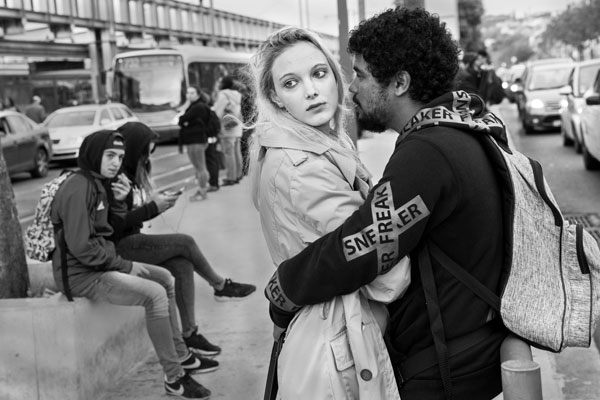The 7-Second Trick For Framing Streets
The 7-Second Trick For Framing Streets
Blog Article
Indicators on Framing Streets You Need To Know
Table of ContentsThe Only Guide for Framing StreetsWhat Does Framing Streets Mean?Framing Streets Can Be Fun For AnyoneFraming Streets Things To Know Before You BuyNot known Factual Statements About Framing Streets The Only Guide to Framing Streets
Digital photography genre "Crufts Dog Show 1968" by Tony Ray-Jones Street photography (additionally sometimes called honest digital photography) is digital photography carried out for art or inquiry that includes unmediated possibility encounters and arbitrary occurrences within public locations, usually with the aim of recording pictures at a decisive or emotional minute by cautious framing and timing. 
Little Known Questions About Framing Streets.
Susan Sontag, 1977 Road photography can focus on individuals and their habits in public. In this respect, the road photographer is similar to social docudrama professional photographers or photojournalists who additionally work in public locations, but with the purpose of catching relevant events. Any of these photographers' images may record people and home noticeable within or from public places, which usually involves navigating ethical issues and regulations of privacy, safety and security, and building.
Representations of day-to-day public life create a style in practically every duration of globe art, beginning in the pre-historic, Sumerian, Egyptian and early Buddhist art durations. Art managing the life of the street, whether within views of cityscapes, or as the leading concept, shows up in the West in the canon of the Northern Renaissance, Baroque, Rococo, of Romanticism, Realistic look, Impressionism and Post-Impressionism.
Unknown Facts About Framing Streets
Louis Daguerre: "Boulevard du Temple" (1838 or 1839) In 1838 or 1839 the initial picture of figures in the road was tape-recorded by Louis-Jacques-Mand Daguerre in among a pair of daguerreotype views extracted from his workshop home window of the Boulevard du Temple in Paris. The second, made at the elevation of the day, shows an uninhabited stretch of street, while the various other was taken at about 8:00 am, and as Beaumont Newhall reports, "The Blvd, so regularly full of a moving throng of pedestrians and carriages was perfectly solitary, except an individual that was having his boots cleaned.
Subsequently his boots and legs were well defined, however he lacks body or head, due to the fact that these were in activity." Charles Ngre, waterseller Charles Ngre. https://www.goodreads.com/user/show/174116073-david-turley was the first digital photographer to attain the technological refinement needed to register people in movement on the road in Paris in 1851. Professional Photographer John Thomson, a Scotsman collaborating with journalist and social lobbyist Adolphe Smith, released Street Life in London in twelve monthly installments starting in February 1877
Framing Streets - Truths
Eugene Atget is considered a progenitor, not because he was the first of his kind, however as a result of the popularisation in the late 1920s of his document of Parisian streets by Berenice Abbott, who was influenced to take on a similar documentation of New York City. [] As the city developed, Atget helped to advertise Parisian roads as a worthy subject for digital photography.

Not known Details About Framing Streets
Martin is the initial recorded photographer to do so in London with a disguised camera. Mass-Observation was a social research organisation established in 1937 which aimed to videotape daily life in Britain and to videotape the responses of the 'man-in-the-street' to King Edward VIII's abdication in 1936 to wed separation Wallis Simpson, and the sequence of George VI. Between 1946 and 1957 Le Groupe des XV annually exhibited job of this kind. Andre Kertesz. Circus, Budapest, 19 May 1920 Street digital photography created the major content of two exhibitions at the Museum of Modern Art (Mo, MA) in New York curated by Edward Steichen, 5 French Photographers: Brassai; Cartier-Bresson, Doisneau, Ronis, Izis in 1951 to 1952, and Post-war European Photography in 1953, which exported the idea of street photography globally.

What Does Framing Streets Mean?
The recording machine was 'a hidden video camera', a 35 mm Contax hidden below his layer, that was 'strapped to the chest and connected to a lengthy cord strung down the ideal sleeve'. However, his job had little contemporary influence as because of Evans' level of sensitivities about the originality of his project and the personal privacy of his websites topics, it was not released till 1966, in guide Numerous Are Called, with an intro written by James Agee in 1940.
Helen Levitt, then an instructor of young kids, linked with Evans in 193839. She documented the temporal chalk illustrations - Best Zoom Lens that belonged to children's road culture in New york city at the time, in addition to the children that made them. In July 1939, Mo, MA's brand-new digital photography area consisted of Levitt's work in its inaugural exhibitRobert Frank's 1958 publication,, was significant; raw and typically out of focus, Frank's images questioned traditional digital photography of the moment, "tested all the formal rules put down by Henri Cartier-Bresson and Pedestrian Evans" and "contradicted the wholesome pictorialism and sincere photojournalism of American magazines like LIFE and Time".
Report this page